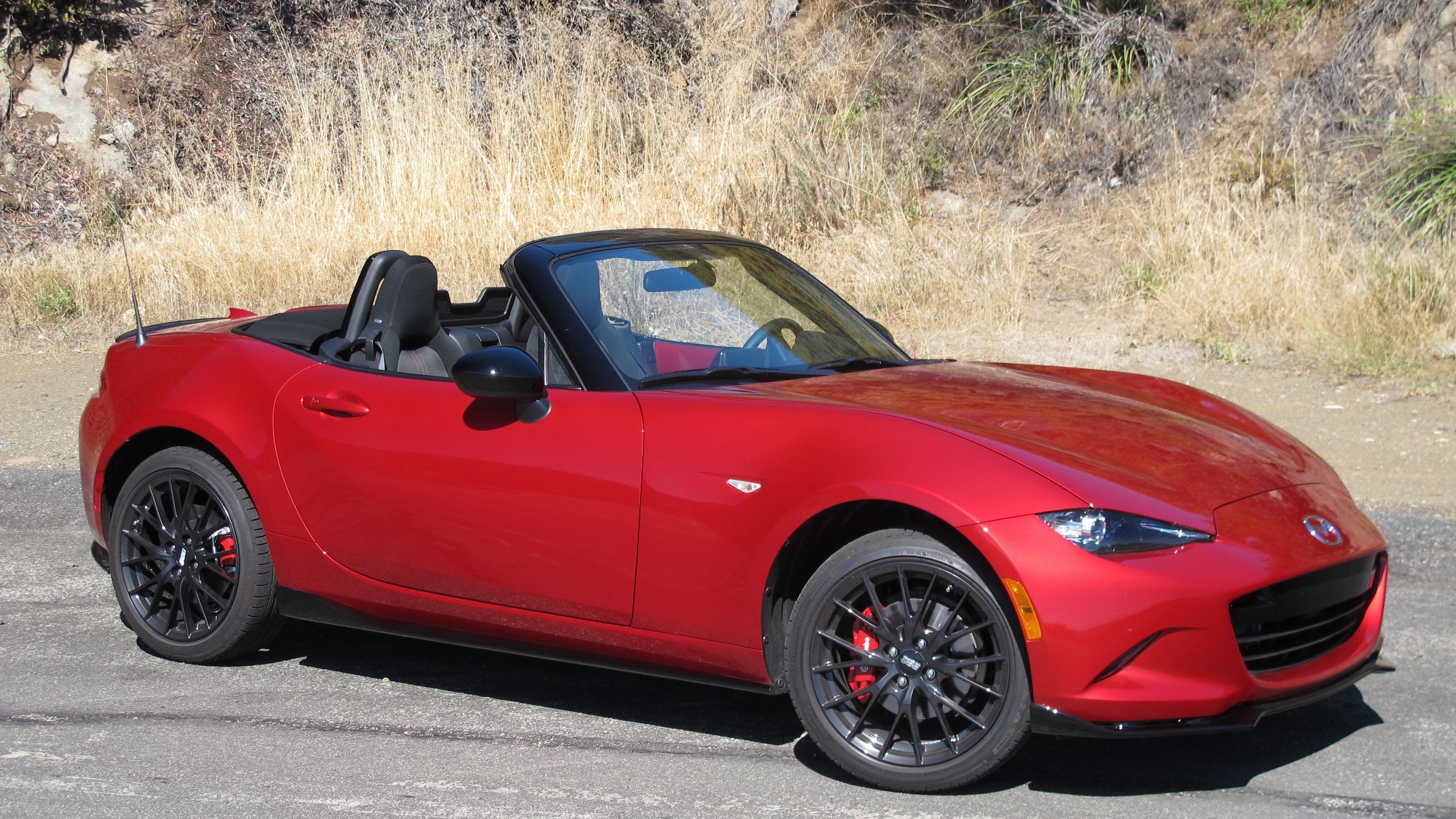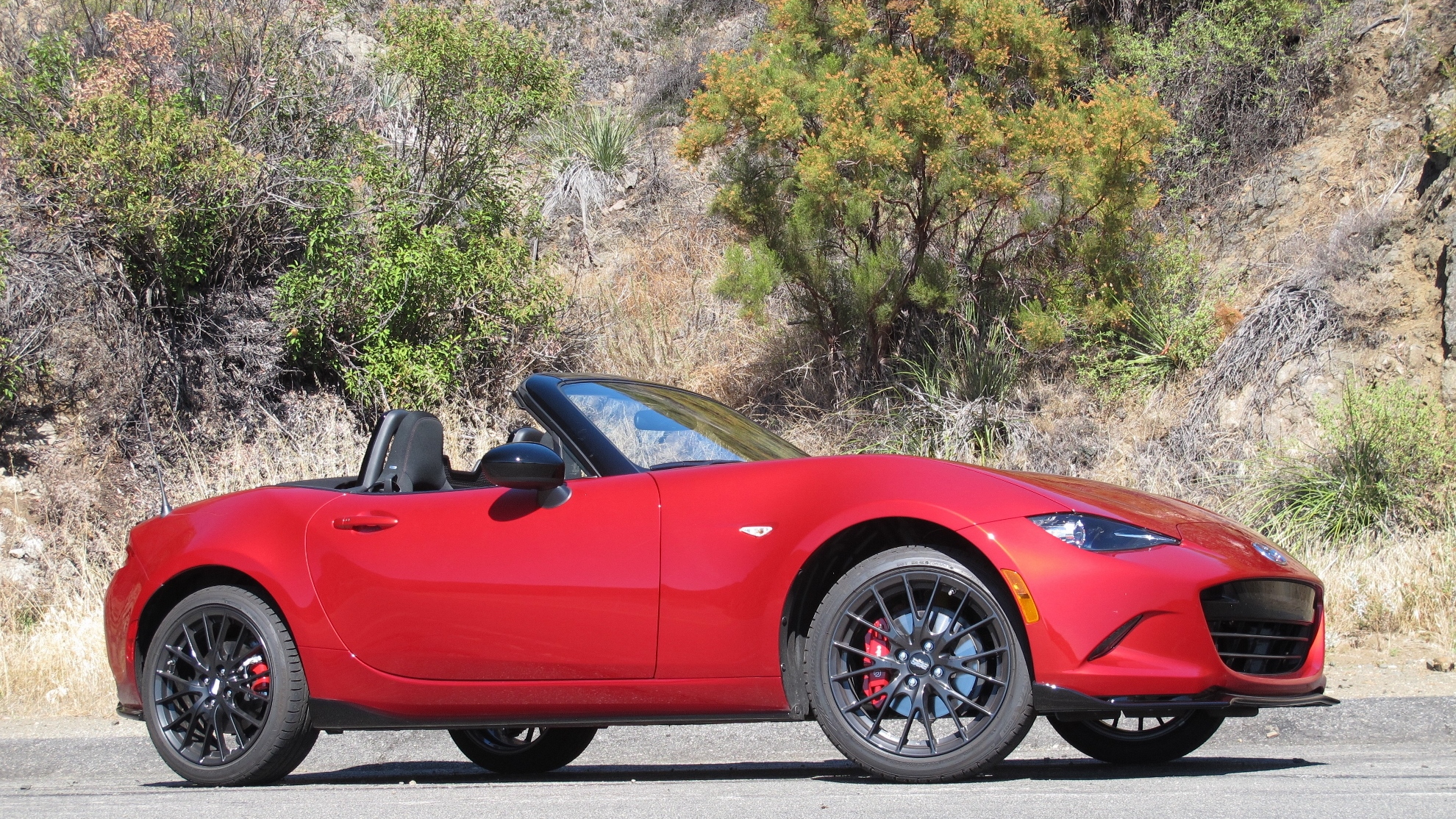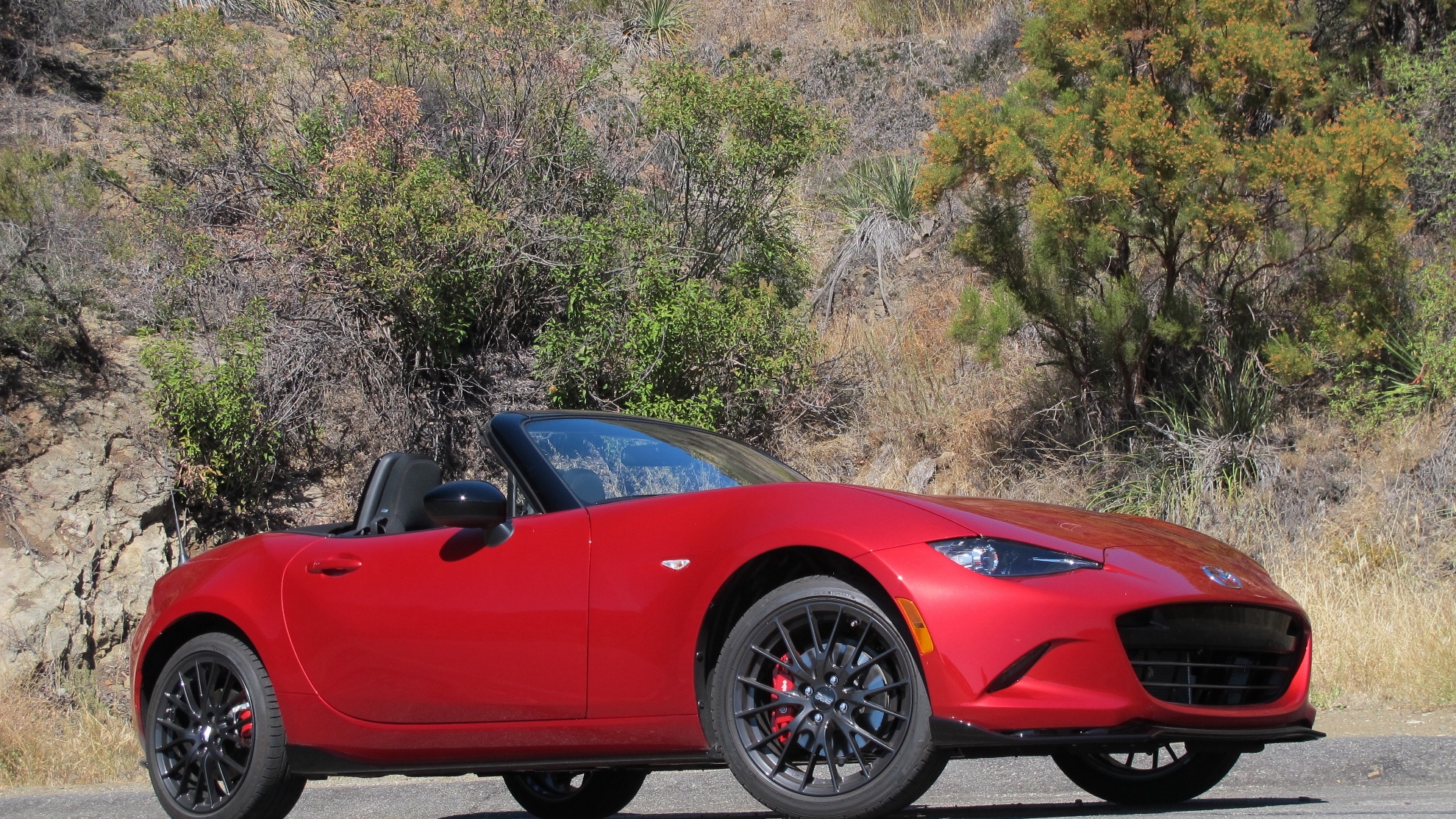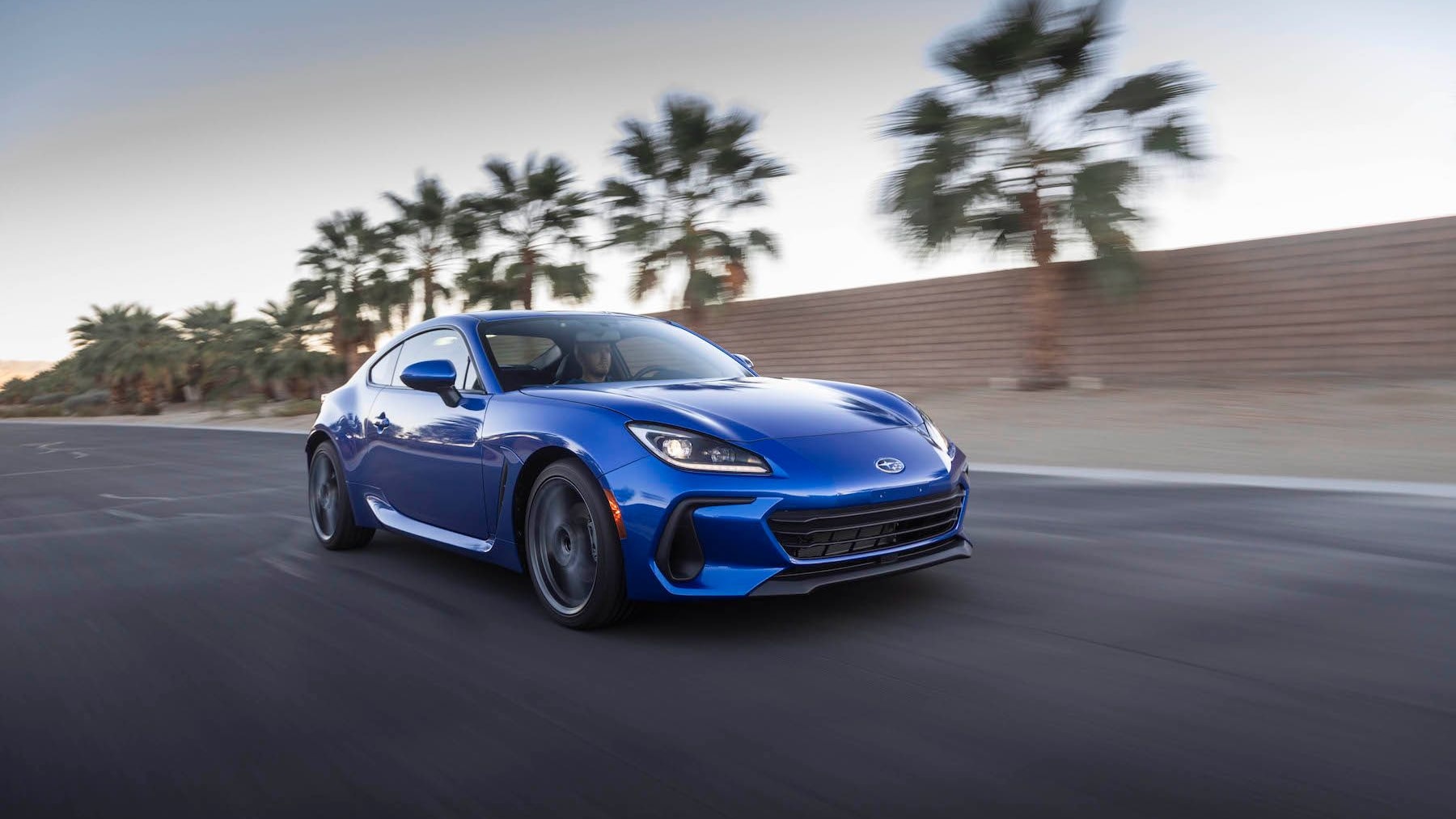There's nothing quite like the Mazda Miata. Since it was new in 1990, it's set a benchmark for sportscars in handling--and it's stayed a benchmark for 25 years.
It's new this year, and it's been completely reengineered for lighter weight and tighter handling.
READ: 2016 Mazda MX-5 Miata First Drive
But how does it stack up in today's sportscar world--a world where you can get 300 horsepower in some family sedans? We took to California's canyon country to sort it all out in the 2016 Mazda MX-5 Miata.
Before taking off for a drive, you need to take a long look at the sharp, tight new body Mazda's wrapped around the Miata.
The new ND Miata is a little shorter than the last version at about 154 inches in all. It's a little wider, at about 68 inches, and wheelbase is up to 91.1 inches.
The proportions aren’t strikingly different, but the more you stare at it, the more you see the clarity of the new design. The beltline has more curves, and the hoodline dips down dramatically at the front. It's more sensually proportioned and detailed--a little less subtle, for sure, but definitely more contemporary.
CHECK OUT: Semi Truck Jumps 166 Feet To Shatter World Record: Video
Climb inside the Miata and it's just as snug and inviting as ever. The driving position is still low and intimate. Big analog gauges rule the pod in front of the driver. Round air vents and climate controls break up the horizontal shelf of the dash.
So does the new infotainment system. It's like the one in the Mazda 3 and CX-3, with a touchscreen stacked on top of the dash--it's practically a big flat-screen TV in something as cozy as the Miata.
What’s under the hood is some of the old and some of the new. Mazda’s 2.0-liter ‘SkyActiv’ direct-injection four-cylinder engine and a short-throw six-speed manual gearbox put out 155 horsepower and 148 pound-feet of torque to the road. If that sounds a little thin, don't forget the Miata's lost about 150 pounds this time around. At about 2,200 pounds, its power-to-weight ratio is very good -- zero to 60 mph times hover around the six-second mark.
For sure the world has changed a lot since 1990. And while it's quick, the Miata isn't much quicker than a Ford Fusion, or even a turbocharged Ford F-150.
ALSO SEE: Porsche 918 Spyder Driver Showing Off Crashes In Car Park: Video
The MX-5 Miata has never been a car for straight-line performance. It's lived and it's breathed for top-notch steering and nimble handling. Within a few miles of driving the Miata, one of the things you realize is that a modern body structure does a lot for a quality highway ride. The new Miata's set up a little softly; engineers have let the Miata have a little more body roll than in past generations. That makes it more usable day to day, and in comparison, an NA Miata will feel a little frantic and jittery. This car is really smooth for being a pure sports car.
One of the hallmarks of the Miata has always been the notchy, snicky feel of the shift lever. Mazda's taken a lot of the weight and a lot of the notchy feel out of the shift action in the ND Miata; if you're looking for that tactile feedback, you're not going to get it--what you're getting is superior shift action.
The Miata's a car where steering feel has to be nailed. We're not sure it's quite there: the electric power steering reacts quickly, even before the rear end has toed in. It's not the worst first attempt at changing over a classic to electric power steering, but it's one factor that distances the purity of the original Miata and its non-power hydraulic steering from the new car.
So what's the bottom line with the 2016 Mazda MX-5 Miata? It may not be an instant classic like the 1990 original--but the Miata still conjures all the top-down joys of a simple, back-to-basics roadster.
_______________________________________









